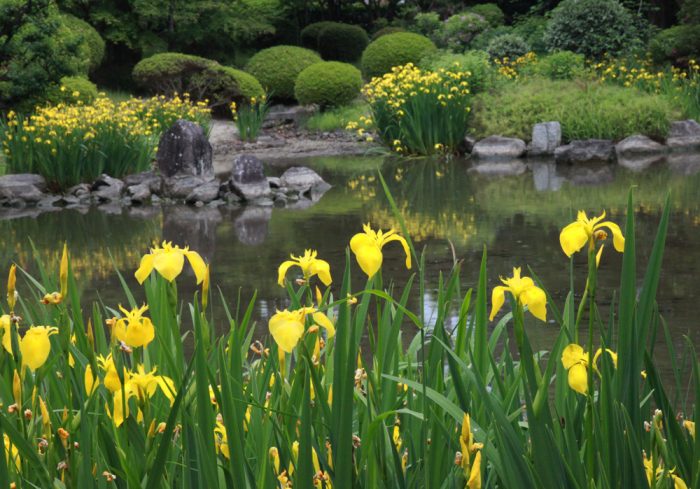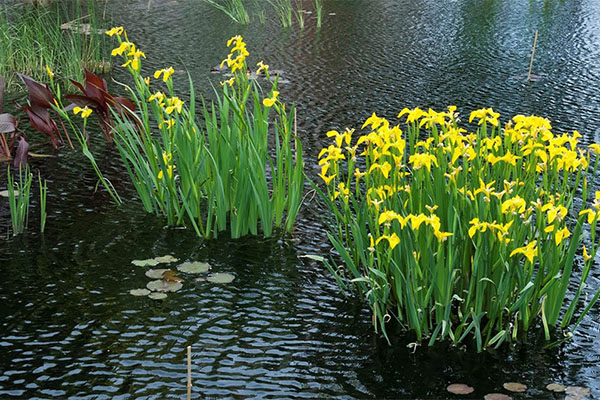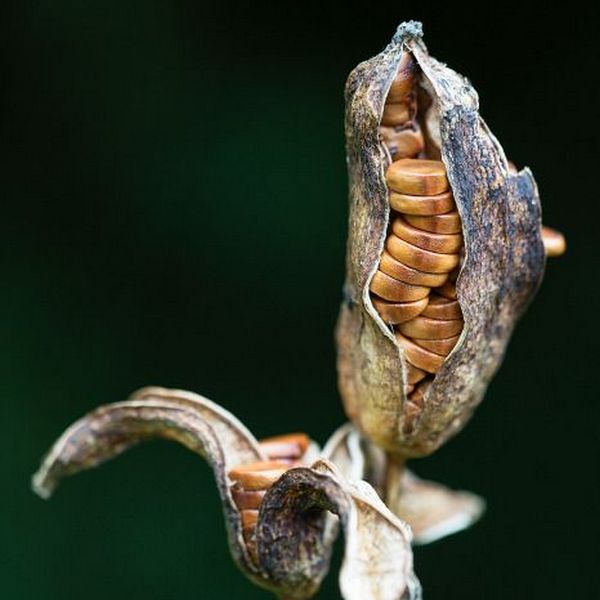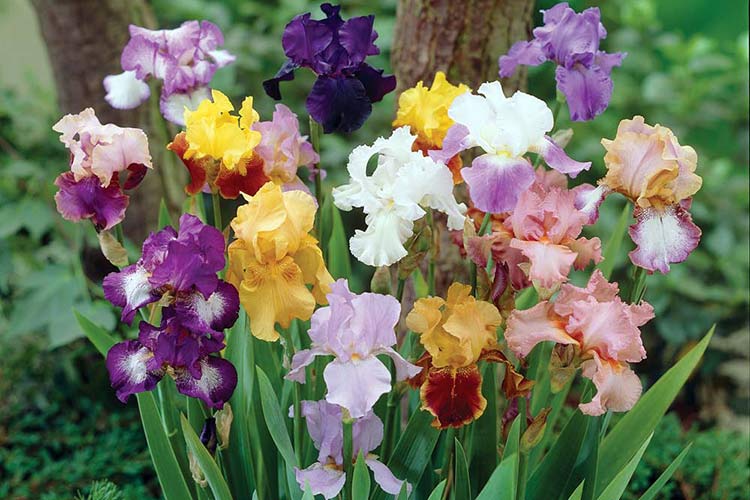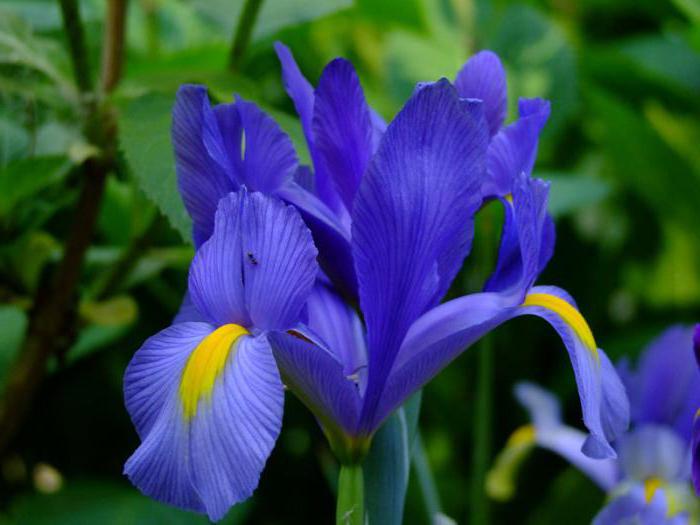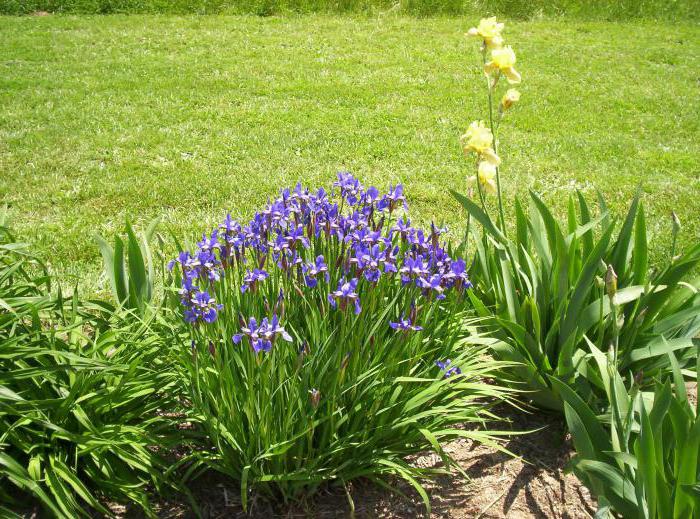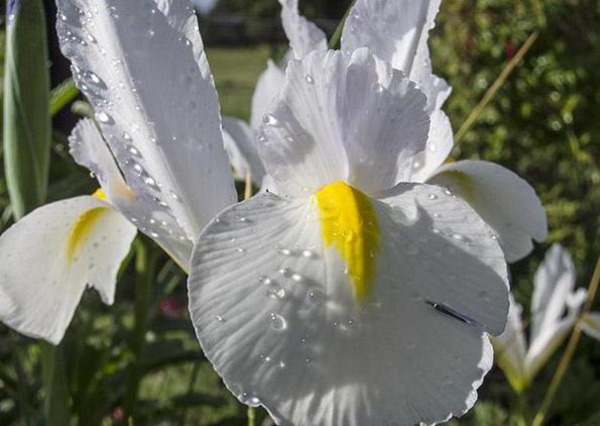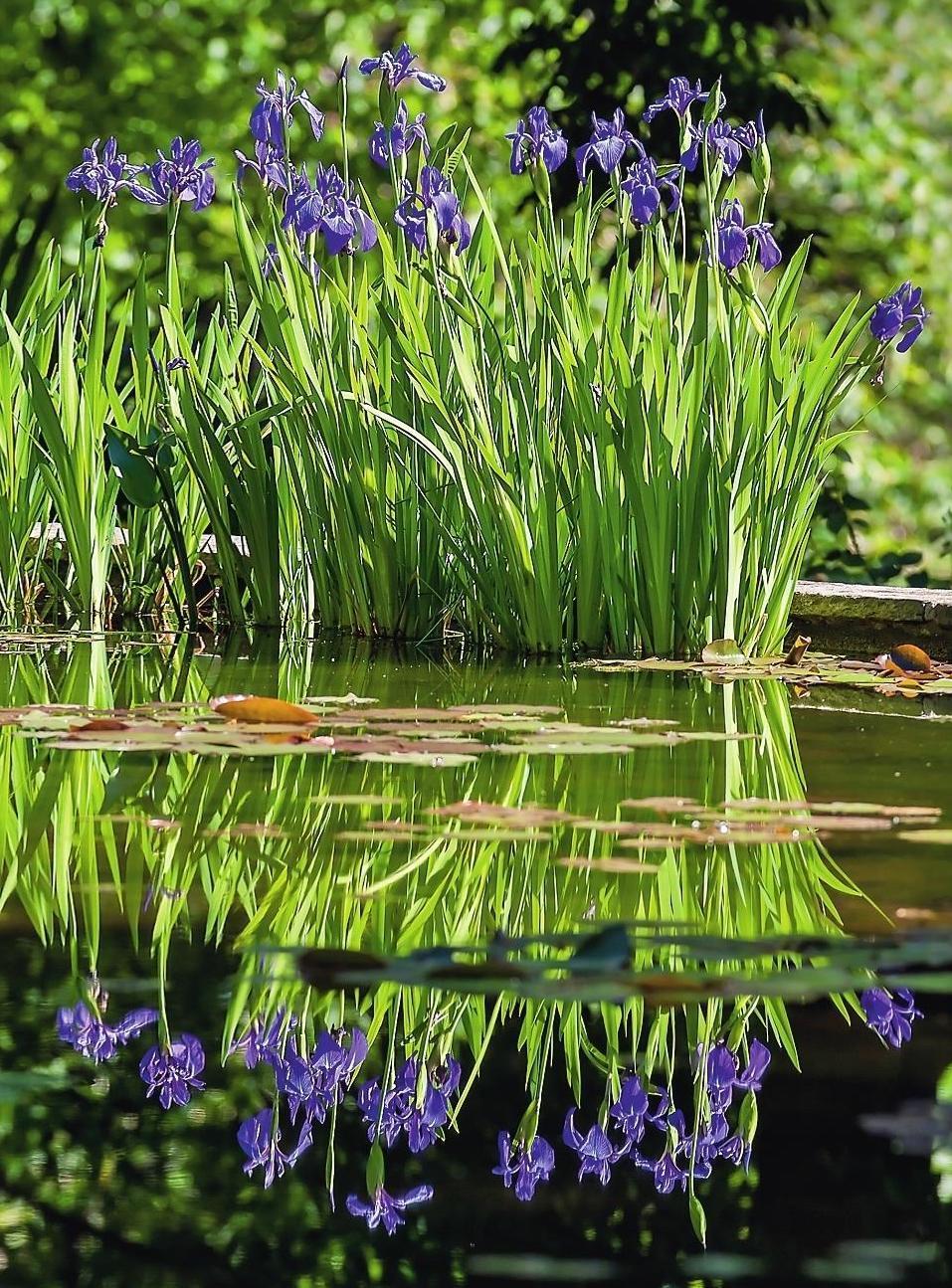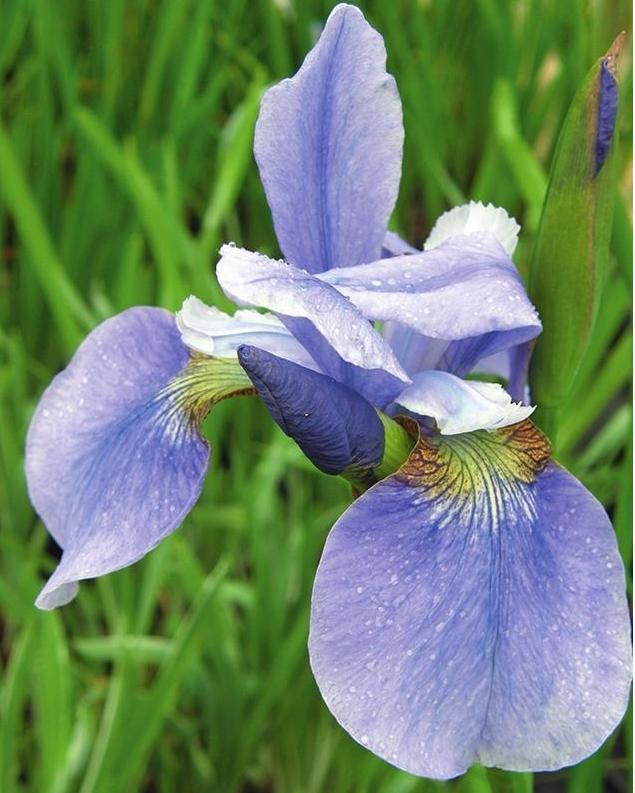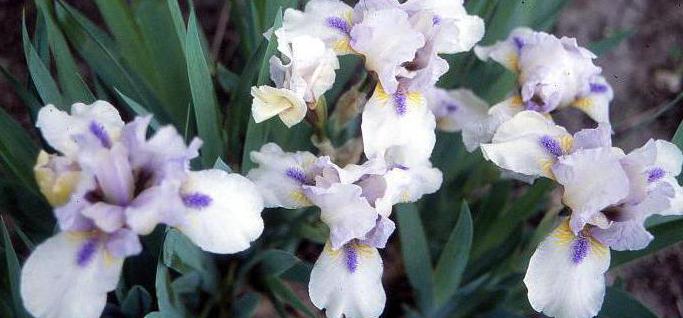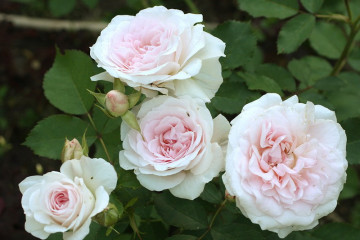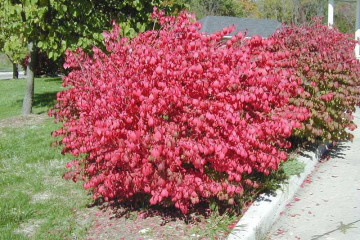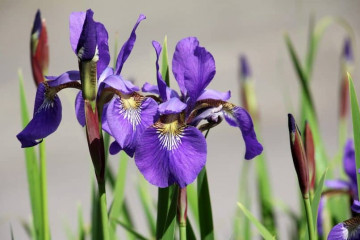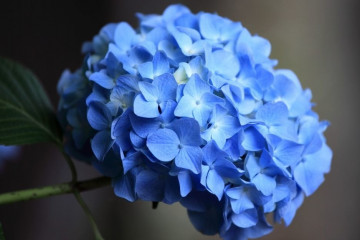Iris marsh, bearded, Japanese, Dutch varietal
Irises are not only wonderful plants that work well for decorating gardens and parks. These flowers are distributed almost all over the world, almost each of their species includes hundreds of different varieties. It is this and the relatively simple care of plants that seduce many flower growers.
Iris marsh
The description says that this plant is characterized by unpretentious care and high resistance to adverse climatic conditions.
The flower has several names: marsh, pseudo-aira (in Latin "Iris Pseudacorus") or yellow iris. The cultivation of this plant does not require complex care. This plant is found not only in gardens and parks, but also in the wild.
Marsh iris usually grows on the shores of water bodies. It can also be found in the armholes of rivers. Adult plants grow to a height of 60 cm to 2 m.
The buds of the iris pseudo-aira are yellow corollas. A strong bend can be seen at the lower petals. Up to 15 flowers bloom on one bush.
The leaf plate is elongated and yellow to the touch.
Iris marsh in landscape design
Iris Pseudacorus will bring any body of water to life. Such a plant can be used for design not only near a pond, but in compositions involving trees and shrubs.
This flower can be used to create a hedge. In flower beds, it goes well with various perennial plants. The plant also looks impressive when planted in a separate group.
Swamp iris varieties
On the basis of this type in the second half of the 20th century. began to actively develop new varieties of marsh yellow iris. Here are the most famous ones:
- black iris is named after the color of the flower. He is known for unpretentious care;
- the Dyble pagoda has a slight doubleness of the inflorescences;
- at Umkirkh, the flowers are pale yellow with a slight pink tint;
- Kurlen is a natural hybrid of two natural species. Its flowers are one and a half times larger than that of a wild-growing analogue;
- Holden Knough is characterized by an original color: a purple mesh is visible on the yellow petals. In this case, the top two are completely painted purple;
- Iris Mtskheta was created by Georgian breeders. The buds are slightly yellow. This variety has a weak winter hardiness.
Planting marsh iris
This flower grows well where there is a lot of sun. However, the presence of penumbra is also fine.
Such a plant does not have any special requirements for the composition of the soil. The best option is heavy soil, rich in organic debris. The limiting value of soil acidity for it is 7. The presence of a large amount of moisture is not an obstacle to flower growth.
When propagating, you can use the seed method or vegetative.
In the first case, take its seeds and place it in moist soil. This can be done in the fall. There is no need to take any special steps during landing. Springs will appear in the spring. When using this method, the flower will begin to bloom no earlier than 3-4 years later.
To use a vegetative propagation method, you will need to cut off the shoot from the root and plant it in a new place. This can be done at any time during the spring-autumn period. However, maximum germination can be achieved if the plant is planted in this way in early spring.
When carrying out this procedure, the following rules must be observed:
- it is impossible to separate the root during the period when flowering occurs;
- the separated part of the root should have stems, leaves and buds.
Before planting in a new place, cut off everything except the 20-centimeter section of the stem.
Care
This plant requires virtually no maintenance. It is very tenacious and tolerates drought and high humidity without any losses. Water can spread its seeds everywhere.
It is only necessary to occasionally apply potash and phosphorus fertilizers.
The plant is susceptible to gladiolus thrips disease. In this case, the leaves are affected. Cases of attack by a sawfly caterpillar are known. In case of disease or insect pests, it is necessary to remove the spoiled parts of the iris and spray with specialized preparations.
Bearded iris
Its appearance is similar to most other varieties of this plant. The flower got its name due to the presence of a small number of bristles in the upper part of the outer petals.
This plant is a hybrid. On its basis, a large number of varieties have been bred, and the selection work is actively continuing to this day. This species is distinguished by a wide variety of colors, similar to the Dutch iris.
The petals are divided into internal and external. The former are directed upward, while the latter fall beautifully downward. At the top of the outer petals is a small bristly beard. At the pistil, you can see three lobes and a nipple ridge. The stamens are hidden under the pistil and inner petals.
Varieties of bearded iris
In tall varieties, the height exceeds 70 cm. The size of the flower can reach 15-20 cm. Medium-sized varieties have a height of 41 to 70 cm. The most famous varieties of the species are:
- dining rooms have a branchy, thin peduncle with 8 cm flowers. They are often used to make bouquets in vases, which influenced the origin of the name;
- curbs resemble tall ones in appearance, but have proportionally smaller buds. Can be of any color, including burgundy;
- Iris Kopatonic has orange flowers;
- Intermedia has a flower size of 10-12 cm. They are always characterized by abundant flowering, which begins in early June;
- Iris Si Si has purple or yellow flowers;
- Nordica is one of the varieties of white irises. They have white petals with a small orange beard.
Dwarf standard bearded species reach a height of 21-40 cm. The smallest varieties are miniature bearded dwarfs. Their height ranges from 5 to 20 cm.
Landing
This plant prefers neutral to slightly alkaline soil. It must be moisture permeable. Clayy and acidic soil will not work for bearded iris. If they need to be planted on heavy soil, it is recommended to add sand to it.
The best time to propagate and plant these plants is after flowering ends. During this period, there is an active growth of roots. They can be seen on the soil surface as light green small bumps. As they grow, they become brittle and break off easily. Until this happens, you can reproduce by dividing the roots. This can also be done later, during the fall, when the root system becomes fibrous and tough.
When planting, a hole is made in which the root of the plant should fit freely. A small mound is poured in the center of it. The plant is placed on it and the root is carefully spread around. Then the required amount of earth is poured.
When planting, you need to make sure that the roots are located under the ground and do not stick out. This is important to ensure that they are warmed up by the sun's rays.
Bearded iris care
Planting and care in the open field for bearded iris is carried out as follows. Watering is generally not needed for this plant. The need for it can arise only during a severe drought. However, the bushes need to periodically weed and trim the weeds.
Gradually, over the years, the outer part of the plant grows, while the inner one gradually grows old and dies off. For 3-4 years, a cluster of dead rhizomes forms in the center. To prevent this, the plant is divided and transplanted.
In August, it is necessary to cut off the leaves that have dried up.
Dwarf and medium-sized flowers do not need shelter for the winter. However, it is recommended to cover tall garden varieties with spruce branches, sawdust, peat or similar material.
It is not recommended to overfeed the plant with nitrogen fertilizers. It is customary to make top dressing after the end of flowering. Ash is suitable for the plant.
Fertilizers are also applied at the beginning of the growth period in the spring (20-30 g of ammonium sulfate and potassium chloride) and when buds begin to form (the same composition as in the previous version).
Japanese iris
For a long time, little was known about the Japanese iris. Currently, the species has more than a thousand varieties.
This type of iris is common in Southeast Asia. Japanese iris can be seen in the wild in Myanmar, China and Japan. It is customary to plant it in such a way that its flowering can be admired from a high place.
This variety is characterized by large flowers. Their diameter reaches 15-24 cm. The flower consists of a perianth, three outer lobes and inner petals. The color can be red, blue, yellow.
The leaves are long and narrow. Their length can reach 60 cm. They are green, and the color range can be from light to dark shades.
Varieties
Here are some common varieties of Japanese iris:
- Vine Raffles' height reaches 80-120 cm. His flowers are lilac-purple. The plant is very resistant to disease;
- Cayune Capers prefers to grow in sunlit areas of gardens or parks. Flowers of this variety can have a wide variety of colors;
- Variegata variety requires a well-drained soil for its growth.
These varieties grow in mild climates and have low frost resistance.
Landing
The plant can grow in bright light or partial shade. The soil can be slightly acidic or neutral.
Japanese iris care
The flower is fed no more than 2-3 times a year. For this, it is recommended to use complex fertilizers. The plant is good for the introduction of a 10% mullein solution. This flower does not grow horizontally, but develops vertically.Therefore, mulching is recommended for him.
For wintering, the stems are cut off, leaving 10-15 cm. Then nutritious soil is poured and sheltered from the cold.
Bulbous iris
This species is considered one of the most romantic and beautiful species. It looks like a tropical butterfly that is about to take off. This impression is enhanced by the colors of reds, blues and other colors.
Bulbous iris is actively used in gardening and when arranging flower beds and flower beds. Blooms from late May to early June. Its flowers can be orange, purple, blue or white. On the outer petals, a small yellow or orange spot can be observed in the center.
When flowering ends, the leaves dry out. At the end of August, the plant becomes completely dry.
Bushes grow up to 60 cm.
Varieties
Here are the most famous varieties:
- iris Portal has blue inflorescences. Planting is carried out from September to November;
- Katharine Hodkin. In the variety, the upper flowers are lilac, the lower ones have purple strokes on a lilac background, and there is a yellow spot in the central part. Plant height does not exceed 15 cm;
- Iris Dunford is a Turkish variety. The buds are bright yellow. There are small green blotches near the perianth.
In total, there are about 800 varieties of bulbous irises. A list of them can be found on information portals dedicated to floriculture.
Planting bulbous iris
To grow this plant, you need to plant its bulb. Before planting, they are treated with fungicides due to the fact that these irises are vulnerable to fungal diseases.
For planting, it must be borne in mind that flowers love good lighting and fertile soil. Before planting the bulb, it is recommended to add organic fertilizers to the hole.
Care
The plant is frost-resistant, but it is advisable to cover it for the winter.
It is necessary to remove the weeds by hand. This is important to avoid damaging the roots.
In the spring, add mineral dressing and loosening. In the fall, it is necessary to remove dried foliage.
Siberian iris
This species has smaller flowers, but there are more of them on the bush than in other species.
In Siberian iris, the height can be from 40 to 160 cm, depending on the variety. They bloom in June and delight the eye with their luxurious appearance for two weeks.
Planting Siberian iris
It is suitable for areas where there is abundant sunlight. There is no need to provide good drainage. Plants easily tolerate conditions when humidity is high.
Before planting, it is recommended to dig up the ground and add decomposed compost or humus.
When planting, the depth of the rhizome pit should not exceed 5-7 cm. The distance between the holes should be 30-50 cm. After planting, you need to water the iris well and mulch the soil.
Siberian iris care
It is recommended to propagate this species by dividing the roots in mid-August.
For spring feeding, it is recommended to use a complex fertilizer.
It is recommended to do watering infrequently, but it should be abundant. It is important that moisture gets to the full depth of the roots.
Dwarf iris
The varieties of this type of irises are distinguished by their miniature size.
The main feature of such varietal irises is their small size. However, this makes it possible for their additional use: they are suitable not only for landscape design (in flower beds or as a border design), but also for growing in pots.
On one peduncle, 2-3 flowers are usually formed. In appearance, dwarf plants are a reduced copy of tall and medium-sized varieties. However, these plants are more unpretentious to care for and hardy in difficult conditions.
Varieties
A few of the most common varieties of dwarf irises are:
- Wink has white flowers. The inner part of the bud is snow-white, the outer petals are bluish. The height of an adult plant is 23 cm;
- Cry Baby is a type of blue iris. It has pale bluish flowers. During flowering, the petals are almost completely white. The height of this xiphoid iris is 28 cm;
- the cereal iris has beautiful reddish-purple buds;
- Puppet. Lavender petals. Three buds 5 × 9 cm in size grow on one peduncle;
- mesh iris. The petals have a complex multicolor color.
Planting a dwarf iris
For planting, it is necessary that the soil is loose, air and water permeable. If the soil is too dense, you need to mix it with sand. Sour soil is undesirable. In this case, it is necessary to add alkaline substances. For this, for example, you can use lime or ash.
The plant needs good drainage, which can prevent waterlogging of the soil.
It is possible to plant these plants in open ground from the beginning of April to the last days of August. Before planting, the earth is dug up and fed with potash, phosphorus, nitrogen fertilizers.
Care
The cultivation of such irises does not differ significantly between dwarf and common varieties. At the beginning of spring, nitrogen-potassium fertilizing is applied. After three weeks, phosphorus and potash fertilizers are added to the soil. During flowering, a complex mineral fertilizer is used.
During the season, it is necessary to prune wilted buds and dried leaves.
The variety of species and varieties enables growers to choose the flower that best suits their tastes and design needs. Any iris is able to decorate the local area, despite the fact that the flowering does not last long.
